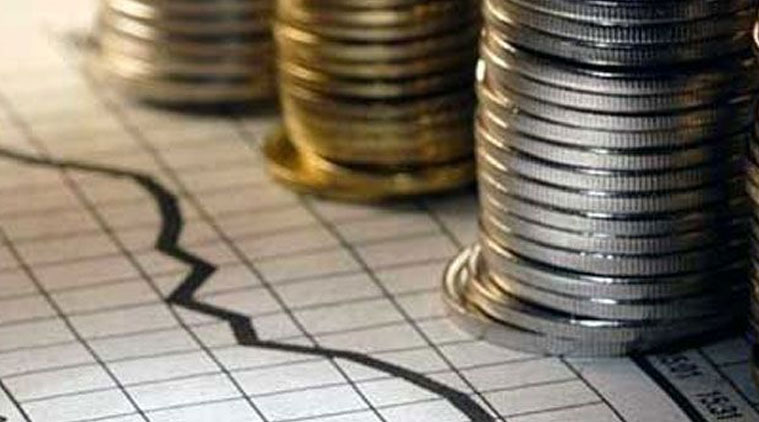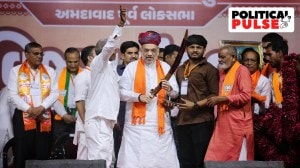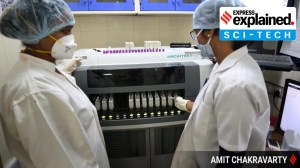- India
- International
No Proof Required: New GDP is for real
Pessimists on Indian growth will have to look for pastures other than the new GDP data
 With a GDP deflator inflation of 6.3 per cent, this is a high 10 per cent real growth for 20 per cent of the economy.
With a GDP deflator inflation of 6.3 per cent, this is a high 10 per cent real growth for 20 per cent of the economy.
Everybody is talking about the new GDP/ But no one is hearing what the CSO is saying/ I’m going where the data are clear/ Through the clouds of ambiguity/ Going where there is no discrepancy/ Between estimate and reality.
— With due apologies to Harry Nilsson’s “Everybody’s Talkin’”
Everybody’s talking about India’s GDP growth prospects and the “fact” that Indian GDP growth might exceed that of China for a second successive year, 2015-16. How did this “miracle” come about? Many people, and economists, and commentators, feel that the miracle is a bit of a fudge. In addition to the hoi polloi, major institutions have also questioned the new GDP data and expressed puzzlement, if not bewilderment. The list of the puzzled is long — the ministry of finance (MoF), RBI, IMF, Moody’s, etc.
What is all the commotion about? At the beginning of the year (January 30 to be exact), the Central Statistical Office (CSO), the arbiters and owners of GDP data, shocked all of us by stating that according to revised estimates, GDP growth in India in 2013-14 (FY14), was a hot 6.7 per cent, in comparison to the cold 5 per cent we had all believed.
The new data also suggested that the Indian growth rate was at least equal to that of China, if not higher, for two consecutive years, FY15 and (forecast) FY16. With the old GDP data, there was no chance of this “excess” for the next few years, let alone today. So, a pyrrhic victory for India in the growth sweepstakes?

An emphatic “no”. There are consistent explanations to this “GDP puzzle” — explanations that suggest that the CSO has got it right. There is no explanation, however, for the CSO’s miscommunication. If only they had explained their workings and provided a back-series, fewer trees would have been felled and likely this article would not have been written!
Broadly speaking, the puzzle solving is as follows, and not independent of politics. First, Lok Sabha elections were held in May 2014, just after the second successive bad GDP growth year of FY14 — only 5 per cent growth compared to 4.7 per cent the year before. The BJP, and Narendra Modi, won largely because the economy was in a shambles, and now we are expected to believe that growth was touching 7 per cent? It is fair to state that if the year of the big growth upgrade was not an election year, there would have been considerably less controversy. Second, the fair argument is made that for the last two years, (FY14 and FY15), growth does not “feel” to be at 7 per cent plus.
While the CSO is to be faulted for miscommunication, analysts are to be doubly faulted for only concentrating on growth rates and not enough on the levels of GDP. If they had done so, they would have noted that the level of nominal and real GDP, factor cost and market prices, are equal to each other, old and new series, for FY14. Second, that for FY12, the base year of the new series, real GDP is 2 per cent lower (all comparisons with the old series, FY05 base); and in FY13, real GDP is 1 per cent lower. So this “fact” answers the query about why growth in FY14 has to have been at least 1 per cent higher than earlier believed — mathematically, it had to be because the levels of real GDPs are equal in FY14.
But the puzzle remains unsolved — how come, after all the revisions, etc, real GDP was 2 per cent lower in the base year of revision, FY12? This goes to the heart of the differences between the old and new. Two sectors of the economy undergo fundamental changes in the revision — wholesale and retail trade (WRT) and manufacturing. The former sees a decline in its share of GDP by approximately 5.5 percentage points and manufacturing witnesses a 4.5 percentage point increase. The new shares are about equal for both (18 per cent of the GDP). Which means two-thirds of old and new GDP is not witness to much change.
But this raises an additional question — why do WRT and manufacturing see such large and unprecedented changes? Because of a change in methodology. Let us take WRT first. In the old method, value added in WRT between FY2000 and FY12 was obtained primarily from wage and employment growth from the NSS Employment and Unemployment Survey of FY2000 and FY05. More concretely, according to the NSSO, WRT employment grew at an average rate of 2.8 per cent between FY2000 and FY05. This growth was then imputed (forecast) for the years between FY05 and FY12. But this forecast went horribly wrong — actual trade employment growth during this period was only 0.8 per cent per annum.
Hence the fact that Humpty Dumpty could not be put together again, the search for a new method of computing GDP for WRT and the arrival of the new “order” — henceforth, GDP in WRT would be computed on the basis of growth in sales taxes. What was nominal sales tax growth in the doubtful high-growth year of FY14? A healthy 17.2 per cent.
With a GDP deflator inflation of 6.3 per cent, this is a high 10 per cent real growth for 20 per cent of the economy, which is not on the radar screen of most analysts and market players. While analysts were looking at corporate balance sheets to get a sense of how India was growing, the real story was under their feet in unorganised Bharat.
This sector in the new data was growing at almost double the rate of the rest of the economy. This near-5 per cent, higher than average growth for WRT — 20 per cent of the economy — means an additional 1 per cent growth for overall GDP growth. Add to this the fact that the GDP deflator inflation in the new series was 0.6 per cent lower, and (voilà!), most of the difference between 5 and 6.7 per cent growth is explained.
The other big change is for manufacturing. Here, the explanation is simply usage of much better balance sheet data, available for more than 5,00,000 companies (the MCA-21 database). Previously, the CSO relied on an old and aged warhorse to deliver information on industrial production — IIP data; now, the government harnesses the modern IT sector by processing balance sheet information on a heretofore unimaginably large number of companies. The “feel” conclusion of a slow economy was derived from insipid IIP growth for FY14 — a negative 0.1 per cent — hence, the angst in the pink pages and among TV anchors. Manufacturing growth on the basis of MCA-21 balance sheet data reveals a recovering economy — growth of 5.3 per cent. In FY15, the same data source reveals manufacturing growth at 6.8 per cent.
One puzzle still remains. GDP growth for the year just ended (FY15) is forecast to be close to 7.5 per cent. But for this very same year, nominal non-food credit growth of 11 per cent is at a 30-year low. How can 7.5 per cent real growth be plausible with such low non-food credit growth? Because of very low inflation. Deflator inflation, at 3.9 per cent, was also close to 30-year lows, a fact that will be confirmed when the very, very low deflator data for January-March 2015 become available. In fiscal year 2015, deflator inflation is likely to be less than the 3 per cent level recorded in 2001, that is, real non-food inflation was not as low as believed because of “money illusion”.
Forecasts of India growing at 7.5 per cent plus, possibly 8.5 per cent, for the next several years are likely to be correct. Pessimists on Indian growth will have to look for pastures other than the new GDP data.
The writer is chairman, Oxus Investments, and Senior India Analyst for the Observatory Group, a New York-based macroeconomic policy advisory firm
40 Years Ago
EXPRESS OPINION
More Explained
May 06: Latest News
- 01
- 02
- 03
- 04
- 05








































